Piso de madeira é um elemento atemporal e versátil, capaz de conferir aconchego e sofisticação a qualquer ambiente. Com diversas opções disponíveis no mercado, é fundamental conhecer os tipos de piso de madeira, suas vantagens e desvantagens, e como escolher o melhor para cada espaço da sua casa. Neste artigo, você encontrará um guia completo sobre pisos de madeira e suas alternativas, dicas de manutenção e informações úteis para ajudar na escolha do revestimento ideal para o seu lar.
Types of Wooden Flooring for your Decor
1. Solid wood flooring
Solid wood flooring is the classic and most traditional type of wood flooring. Made from solid wood planks, such as Ipê, Jatobá or Cumaru, this type of flooring is known for its durability and resistance. However, it requires periodic maintenance and can be more expensive.
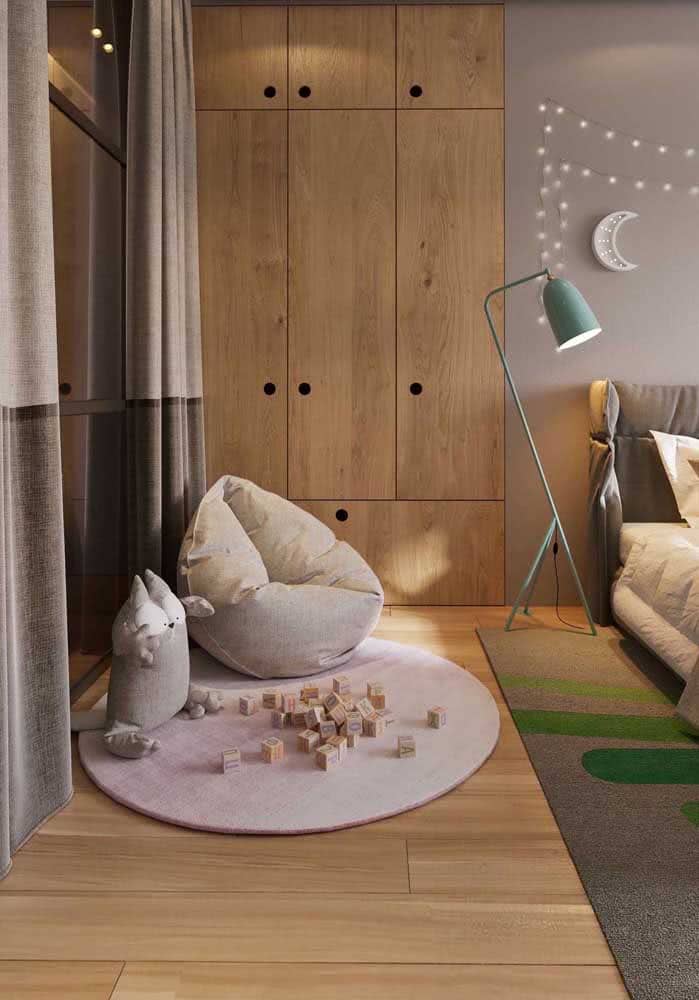
2. Laminate flooring
Laminate flooring is an affordable, easy-to-install alternative that mimics the look of wood. Its surface is composed of a photographic image of wood applied to a high-density fiberboard (HDF). Although it is easy to clean and does not require frequent maintenance, laminate flooring is sensitive to water and may have inferior acoustic performance.
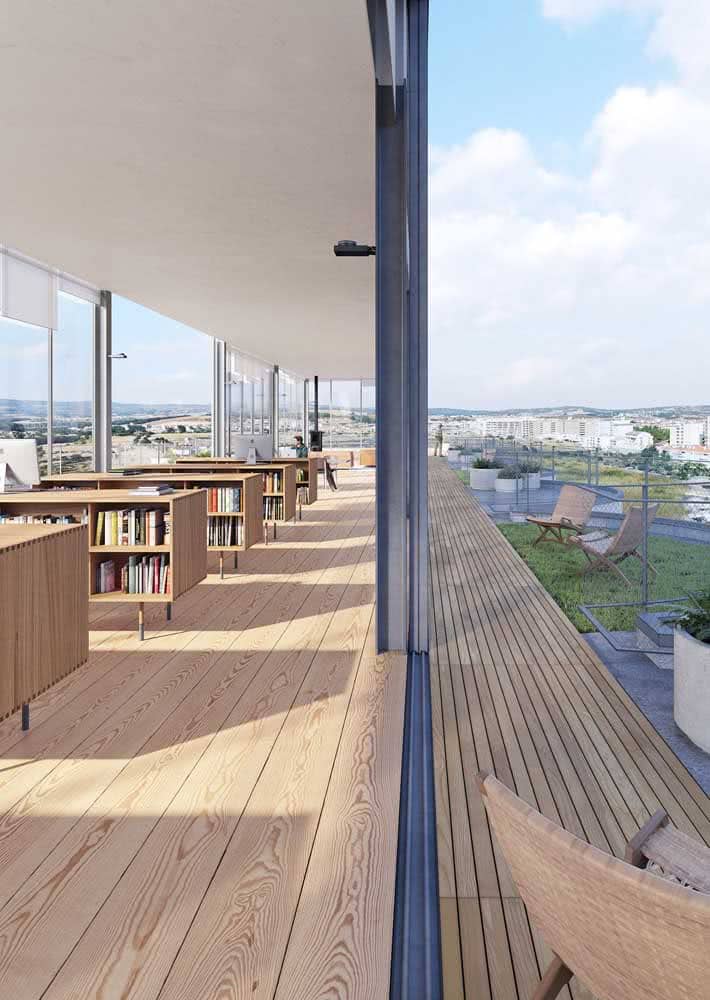
3. Vinyl flooring
Vinyl flooring is made of PVC and, like laminate, has an image that imitates the texture of wood. It is resistant and durable, with greater tolerance to water compared to laminate. In addition, it offers thermal and acoustic comfort, but it can scratch easily.

4. Wood-effect porcelain tiles
O porcelanato amadeirado é uma opção de revestimento cerâmico que imita a aparência da madeira. Resistente, durável e impermeável, é uma ótima escolha para áreas úmidas, como banheiros e cozinhas. No entanto, por ser um piso frio, pode causar desconforto térmico em locais de clima mais frio.
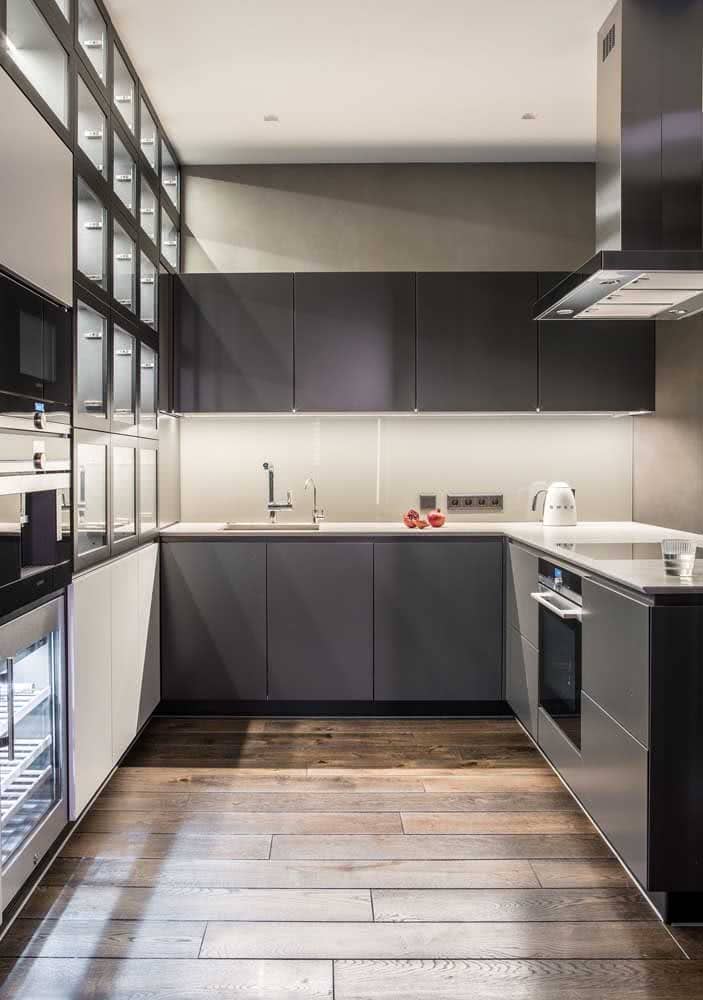
5. Modular wood flooring (deck)
Modular wood flooring, also known as decking, is ideal for outdoor and humid areas. Usually made from resistant woods, such as Ipê and Massaranduba, this type of flooring is installed above ground level, providing comfort and beauty to the outdoor area. However, it requires regular maintenance to prevent wear and rot.
6. Wooden flooring in blocks
Parquet flooring is a popular and versatile option that allows for the creation of a variety of installation patterns. It is made with small strips of solid wood, such as Peroba and Jatobá, and has similar characteristics to solid wood flooring.
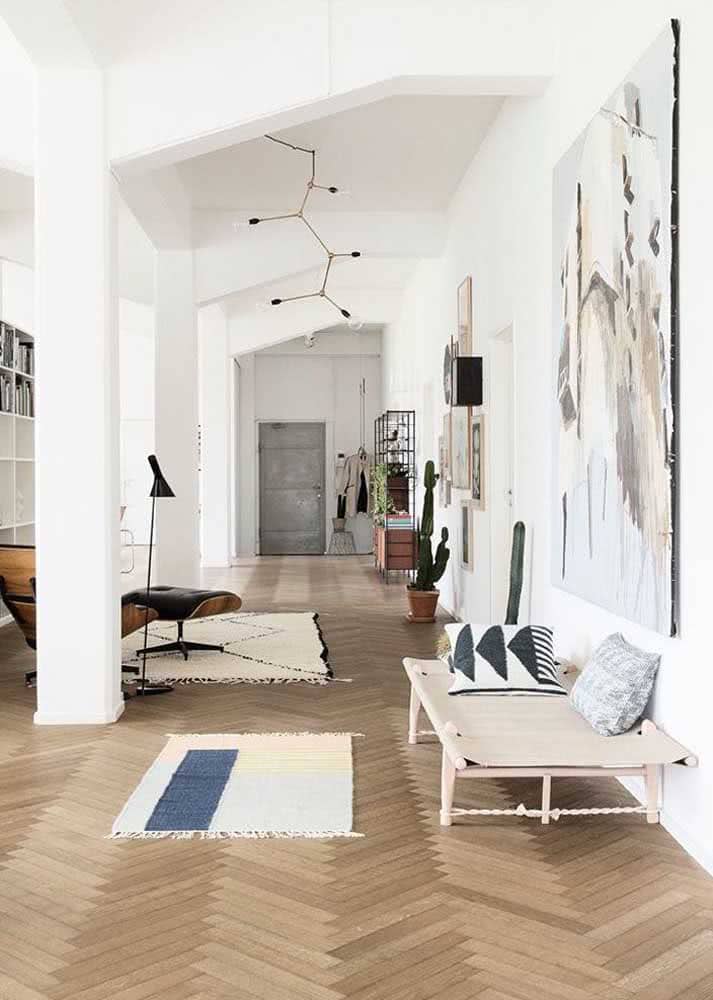
However, it is important to note that installing this type of flooring can be more laborious and time-consuming, since the pieces are smaller and need to be fitted together carefully. Furthermore, like solid wood floors, parquet floors also require periodic maintenance to ensure their durability and beauty.
7. Parquet wood flooring
Parquet wood flooring is an alternative to parquet flooring, and is made up of small pieces of solid wood arranged in geometric patterns. One of the main differences between parquet and parquet flooring is that parquet is sold in pre-assembled modules, making it easier to install.

The advantages and disadvantages of parquet are similar to those of solid wood and parquet flooring, with the need for periodic maintenance and a higher cost compared to other options that imitate wood. Now that you know the main options for wooden flooring and alternatives that imitate wood, it is important to consider the characteristics of each type to choose the most suitable one for your project.
Some important questions to ask are:
- What is the available budget?
- Is the environment humid or wet, such as bathrooms or outdoor areas?
- Will the installation be done by a professional or will you do it yourself?
- How important is thermal and acoustic comfort for the environment?
- Are you willing to perform periodic maintenance on the floor?
By considering these aspects, it becomes easier to decide which wood flooring option or alternative is best suited to your space. If you are a lay reader and are looking for information to clarify any doubts, be sure to consult professionals in the field, such as architects and interior designers, who can help you make the best decision according to your needs and preferences.
They will also be able to provide valuable tips on the installation and maintenance of different types of wood flooring and alternatives, ensuring a flawless and long-lasting end result.
How to choose the ideal wooden floor for each room?
For lay readers looking for information to clear up doubts, it is important to know how to choose the ideal wooden floor for each room in the house. Here are some tips that can help:
Living rooms and bedrooms

In these environments, it is generally recommended to use solid wood floors, such as parquet, hardwood or parquet, as they provide greater thermal and acoustic comfort.
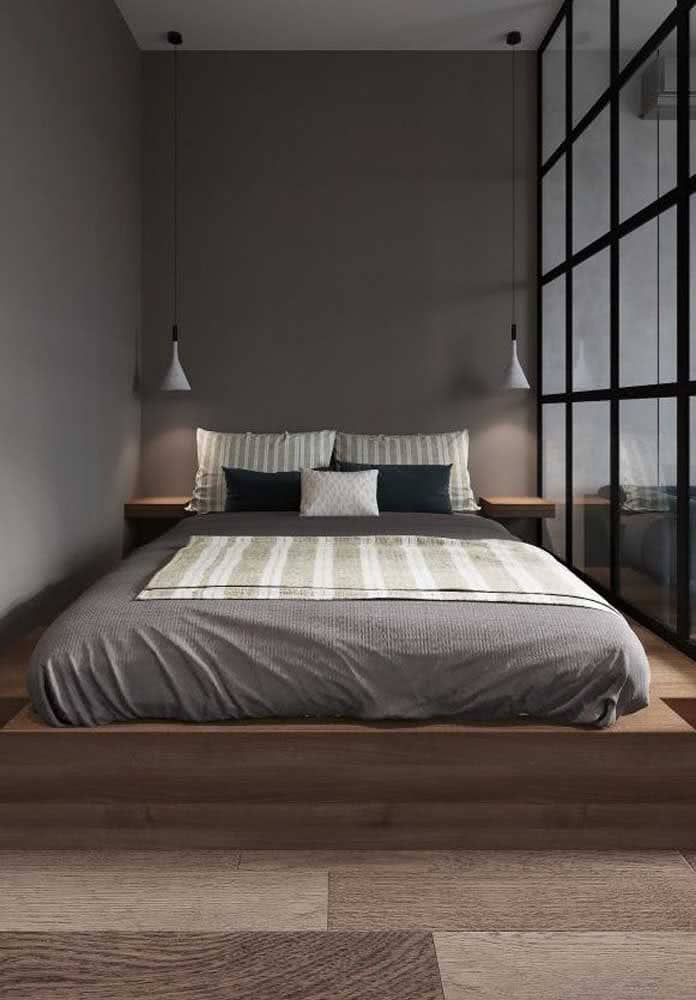
Laminate and vinyl floors are also good options, especially for those looking for a more economical and easy-to-maintain alternative.
Kitchens and bathrooms
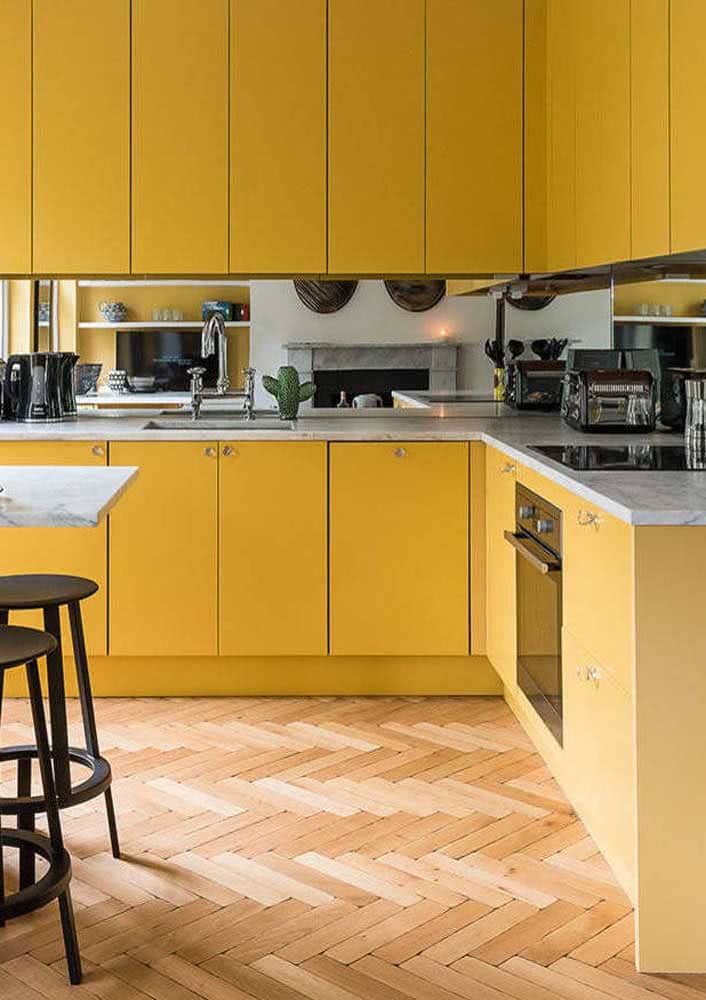
Kitchens and bathrooms are humid areas and therefore require more water-resistant flooring.
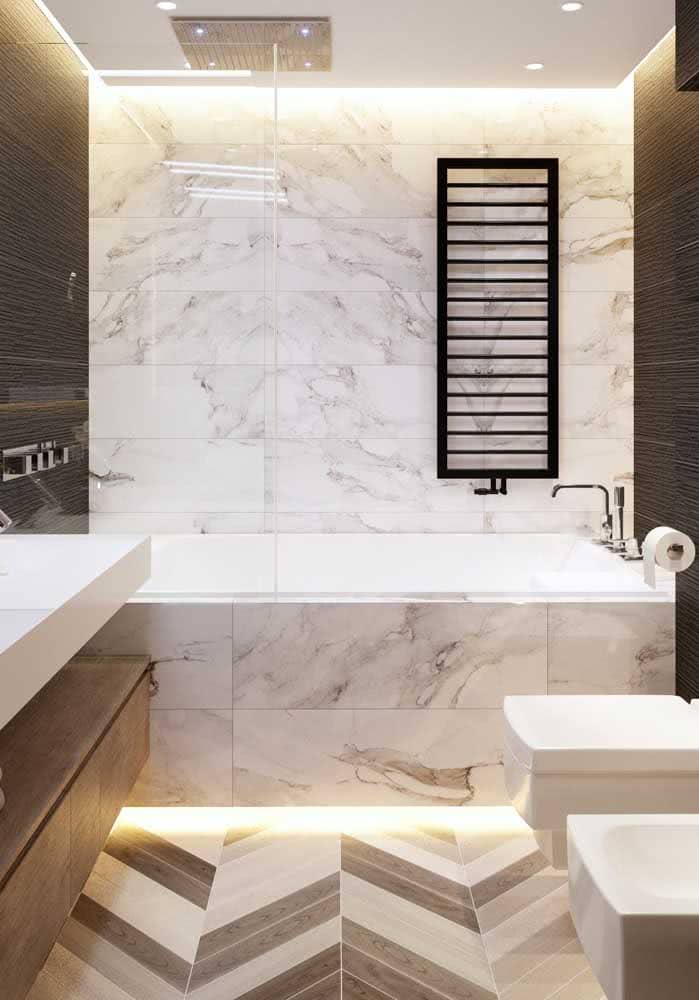
In these cases, porcelain and vinyl wood floors can be good options, as they imitate the appearance of wood, but are more resistant to humidity and do not require constant maintenance.
External areas
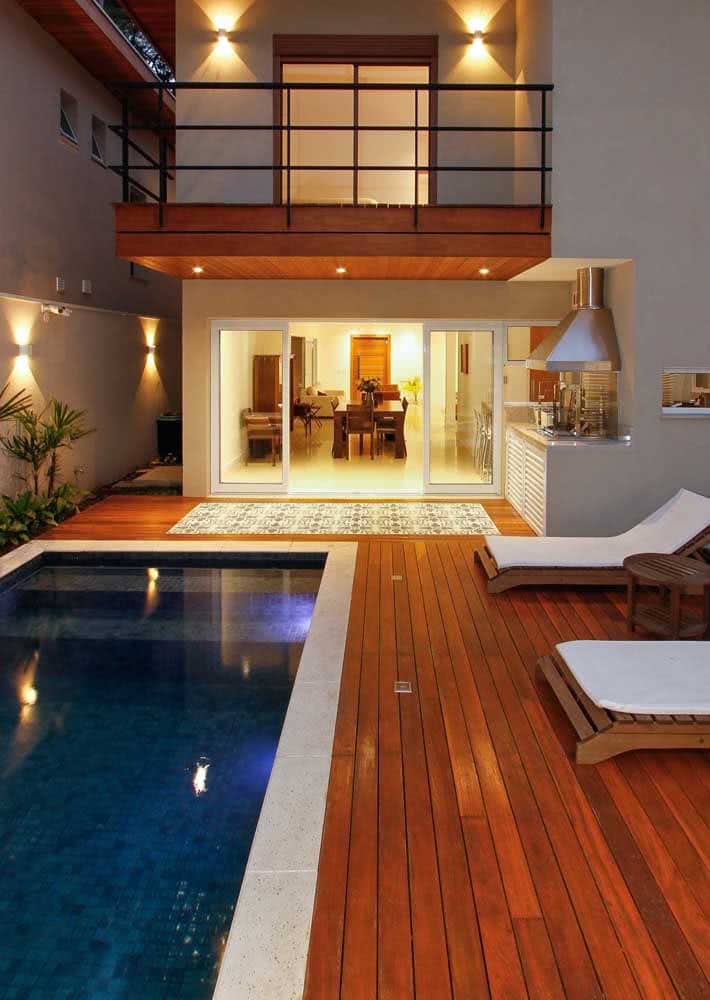
For outdoor areas, such as balconies, decks and gardens, it is important to choose floors that are resistant to sun, rain and temperature variations.
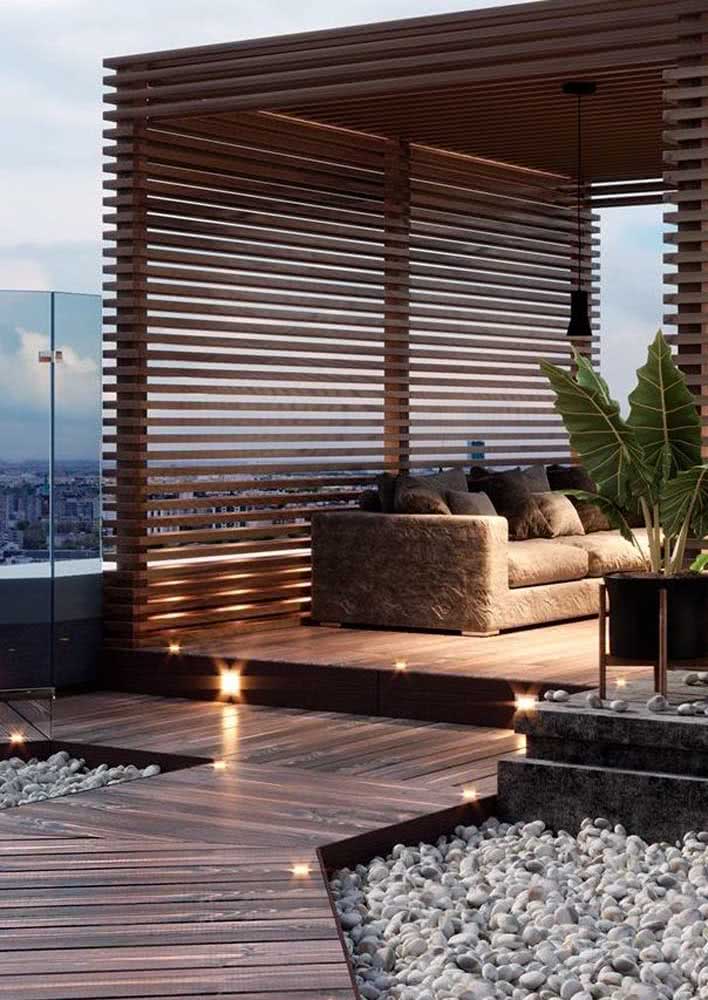
Wood deck flooring is the most suitable option for these environments, as it is specifically designed to withstand outdoor conditions.
Wood floor maintenance and alternatives
Maintenance of wooden floors and alternatives that imitate wood varies depending on the type of flooring chosen:
- Solid wood floors (wood flooring, parquet flooring and parquet flooring) require periodic maintenance, such as sanding, polishing and applying varnish or resin, to preserve their beauty and durability.
- Laminate floors should be cleaned with a damp cloth and neutral detergent, avoiding excessive use of water to avoid damaging the material.
- Vinyl floors, although more water-resistant than laminate floors, should still be cleaned carefully, using a damp cloth and mild detergent. Porcelain wood floors are easy to clean and can be sanitized with water and common cleaning products.
Choosing the ideal wood flooring for your home can be a challenge, especially for lay readers looking for information to clear up doubts. Knowing the types of flooring available, their characteristics, advantages and disadvantages is essential to making an informed decision.
Additionally, it is important to take into account the environment where the floor will be installed, the available budget and the need for maintenance over time. Consulting professionals in the field, such as architects and interior designers, can also be useful to obtain specific and personalized guidance for your project.
Did you like this amazing tip? If so, share it with your friends and on your social networks. Leave your comment below and your suggestions. Receive it daily here on our website. Blog of ideas and tips free and follow us on Google News too. Thank you!